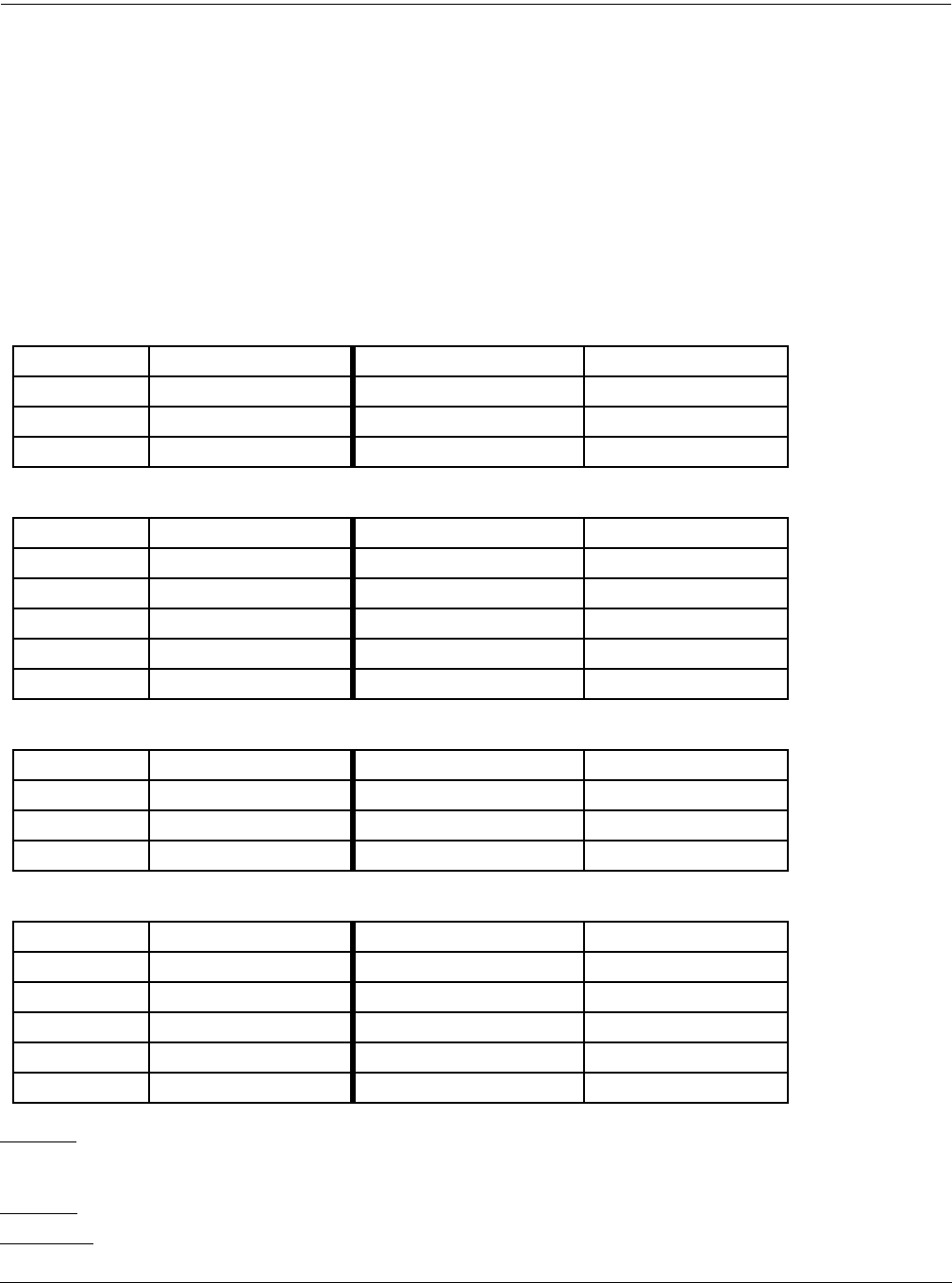User Guide
Table Of Contents
- FXAlg #1: MiniVerb • FXAlg #2: Dual MiniVerb
- FXAlg #3: Gated MiniVerb
- FXAlgs #4-11: Classic • TQ • Diffuse • Omni reverb...
- FXAlg #12: Panaural Room
- FXAlg #13: Stereo Hall
- FXAlg #14: Grand Plate
- FXAlg #15: Finite Verb
- FXAlg #130: Complex Echo
- FXAlg #131: 4-Tap Delay • FXAlg #132: 4-Tap Delay ...
- FXAlg #133: 8-Tap Delay • FXAlg #134: 8-Tap Delay ...
- FXAlg #135: Spectral 4-Tap • FXAlg #136: Spectral ...
- FXAlgs #150–153: Choruses
- FXAlg #154: Flanger 1 • FXAlg #155: Flanger 2
- FX Algs #156-160: Phasers
- Combination Algorithms [“+”]
- Configurable Combination Algorithms [“<>”]
- FXAlg #714: Quantize+Flange
- FXAlg #715: Dual MovDelay • FXAlg #716: Quad MovDe...
- FXAlg #720: MonoPitcher+Chor • FXAlg #721: MonoPit...

FXAlg #133: 8-Tap Delay ¥ FXAlg #134: 8-Tap Delay BPM
Algorithm Reference-41
The Hold parameter is a switch which controls signal routing. When turned on, Hold will play whatever signal is
in the delay line indefinitely. Hold overrides the feedback parameter and prevents any incoming signal from
entering the delay. You may have to practice using the Hold parameter. Each time the sound goes through the
delay, it is reduced by the feedback amount. If feedback is fairly low and you turn on Hold at the wrong moment,
you can get a disconcerting jump in level at some point in the loop. The Hold parameter has no effect on the
Wet/Dry or HF Damping parameters, which continue to work as usual, so if there is some HF Damping, the delay
will eventually die out. It is an excellent candidate for a KDFX Modulation routing using a momentary foot switch
as a source.
Parameters:
PAGE 1
PAGE 2
PAGE 3
PAGE 4
Wet/Dry The relative amount of input signal and delay signal that is to appear in the Þnal effect
output mix. When set to 0%, the output is taken only from the input (dry). When set to
100%, the output is all wet.
Out Gain The overall gain or amplitude at the output of the effect.
Fdbk Level The percentage of the delayed signal to feed back or return to the delay input. Turning
up the feedback will cause the effect to repeatedly echo or act as a crude reverb.
Wet/Dry 0 to 100%wet Out Gain Off, -79.0 to 24.0 dB
Fdbk Level 0 to 100%
Xcouple 0 to 100% Dry Bal -100 to 100%
HF Damping 16 Hz to 25088 Hz Hold On or Off
Loop Crs 0 to 5100 ms DelayScale 0.00x to 10.00x
Loop Fine -20 to 20 ms
Tap1 Crs 0 to 5100 ms Tap3 Crs 0 to 5100 ms
Tap1 Fine -20 to 20 ms Tap3 Fine -20 to 20 ms
Tap2 Crs 0 to 5100 ms Tap4 Crs 0 to 5100 ms
Tap2 Fine -20 to 20 ms Tap4 Fine -20 to 20 ms
Tap5 Crs 0 to 5100 ms Tap7 Crs 0 to 5100 ms
Tap5 Fine -20 to 20 ms Tap7 Fine -20 to 20 ms
Tap6 Crs 0 to 5100 ms Tap8 Crs 0 to 5100 ms
Tap6 Fine -20 to 20 ms Tap8 Fine -20 to 20 ms
Tap1 Level 0 to 100% Tap5 Level 0 to 100%
Tap2 Level 0 to 100% Tap6 Level 0 to 100%
Tap3 Level 0 to 100% Tap7 Level 0 to 100%
Tap4 Level 0 to 100% Tap8 Level 0 to 100%
Tap1/-5Bal -100 to 100% Tap3/-7Bal -100 to 100%
Tap2/-6Bal -100 to 100% Tap4/-8Bal -100 to 100%










